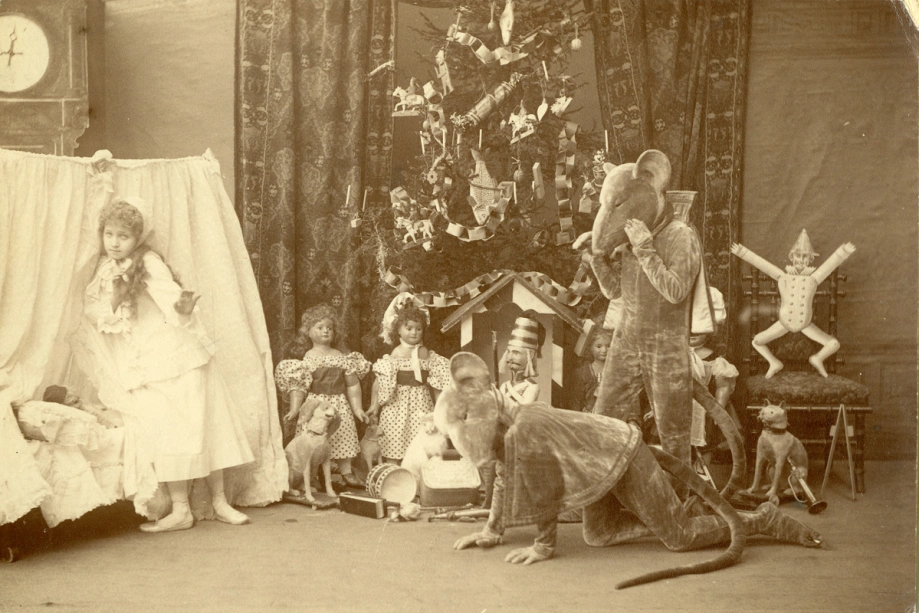
In the winter of 1892, on December 18, the Mariinsky Theatre in St. Petersburg, Russia, was the stage for a historic moment in the world of performing arts. It was here that Pyotr Ilyich Tchaikovsky’s “The Nutcracker” made its debut, a ballet that would go on to become a beloved holiday tradition across the globe, although its journey to fame was anything but straightforward.
The genesis of “The Nutcracker” can be traced back to the success of “The Sleeping Beauty,” a collaboration between Tchaikovsky, Ivan Vsevolozhsky, the director of the Imperial Theatres, and choreographer Marius Petipa. Inspired by this triumph, Vsevolozhsky selected E.T.A. Hoffmann’s 1816 story “The Nutcracker and the Mouse King” for their next project. Tchaikovsky, despite his initial reluctance towards the adapted story, composed the music, unknowingly crafting what would become a cornerstone of classical music.
As the ballet took shape, Petipa’s innovative choreography demanded music that could not only complement but enhance the visual storytelling. The crescendo marking the growth of the Christmas tree and the delicate notes of the “Dance of the Sugar Plum Fairy” were examples of how music and dance could intertwine to create a magical narrative.
Interestingly, before the ballet even premiered, Tchaikovsky presented the Nutcracker Suite, a compilation of pieces from the ballet, to the Russian Musical Society. This suite was warmly received, contrasting the lukewarm initial reception of the ballet itself. In its early days, “The Nutcracker” faced criticism for its perceived lack of coherent plot and artistic depth. Critics were harsh, with many viewing it as a step down in the artistic trajectory of ballet.
Adding to the ballet’s rich history are several lesser-known facts. For instance, “The Nutcracker” was originally considered to be titled “The Christmas Tree” or “The Fir Tree.” The nutcracker itself, a symbol of good luck in German folklore, became synonymous with Christmas largely due to the ballet’s influence. Moreover, the original manuscript of the Nutcracker Suite was lost for 50 years and was only rediscovered in 1946, now preserved in a museum near Moscow.
In the 1980s, there was an attempt to return to the darker roots of Hoffmann’s original tale, with Maurice Sendak, famous for “Where the Wild Things Are,” contributing to a new televised adaptation.
Over time, “The Nutcracker” evolved from a criticized piece to a beloved holiday classic. Its transformation is a testament to the enduring appeal of the arts and the capacity of audiences to find new appreciation for works over time. Today, as Tchaikovsky’s familiar compositions fill theaters each holiday season, they serve as a reminder of the ballet’s humble beginnings and its journey to becoming an indispensable part of cultural heritage. This remarkable transformation from obscurity to legendary status is not just a story of a ballet but a narrative of how art can transcend initial perceptions to become a timeless tradition.

Interesting Tidbits
- The Name Game: Originally, the ballet had working titles like “The Christmas Tree” or “The Fir Tree” before settling on “The Nutcracker.”
- Cultural Significance: The Nutcracker symbol, rooted in German folklore, was believed to bring good luck and protect the home, which is why Clara receives one as a Christmas gift.
- Lost and Found: The original manuscript of The Nutcracker Suite was lost for 50 years and was only recovered in 1946, now housed in a museum near Moscow.
- Back to the Dark Roots: In the 1980s, an adaptation aimed to return to the darker aspects of Hoffmann’s original tale, enlisting Maurice Sendak, known for “Where the Wild Things Are,” for a televised performance in 1983.
- The Celesta: The unique twinkling sound in “The Dance of the Sugar Plum Fairy” is produced by an instrument called the celesta. Tchaikovsky used the celesta, a relatively new instrument at the time, to create the magical sound that Petipa wanted to evoke “drops of water shooting out of fountains.” Tchaikovsky reportedly smuggled this instrument into Russia from Paris to use in the ballet
- Hoffmann’s Original Tale vs. The Ballet: The ballet “The Nutcracker” is significantly lighter in tone than E.T.A. Hoffmann’s original story, “The Nutcracker and the Mouse King.” Hoffmann’s tale was much darker, featuring a more intense battle between the Nutcracker and the Mouse King’s army and a backstory about the prince’s transformation into a nutcracker. The ballet is based on a softer adaptation of Hoffmann’s story by Alexandre Dumas, which is why the protagonist in many productions is named Clara or Klara, from Dumas’s version where the character is Klara Silberhaus
- Tchaikovsky’s Death: Tchaikovsky died less than a year after the original production of “The Nutcracker.” He never saw the immense global impact his composition would have in the decades to follow.




Leave a Reply